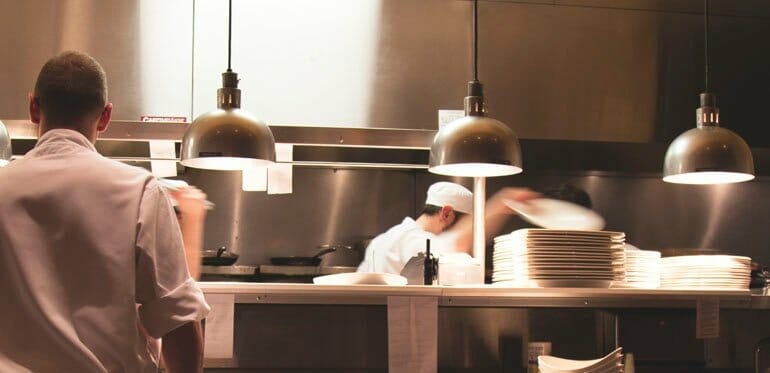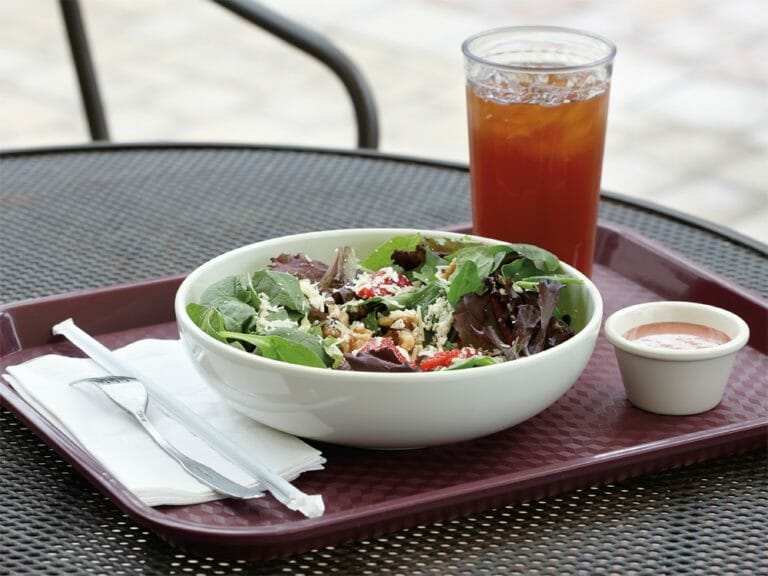What Happens if You Put Melamine Dinnerware Under Food Warmer Heat Lamps?
Foodservice operators have enjoyed melamine dinnerware for decades due to its range of applications, stylish yet functional designs, and low replacement rates compared to china. If you’re a seasoned melamine dinnerware user, you’re probably familiar with the recommended restrictions when it comes to heat exposure. Broadly speaking, melamine plates shouldn’t be exposed to more than 160°F, which means it shouldn’t be microwaved, put in the oven, or used with heat lamps.
Here at G.E.T., we’ve spoken to foodservice operators who have dutifully followed these recommendations, but they don’t know why. Fortunately, with our 30+ years of experience and as a leader in the category, we’re perfectly positioned to answer the why behind these recommendations. So, what happens if you put your melamine dinnerware under a heat lamp in a commercial kitchen, and what does it mean for your foodservice establishment and guest experience?
How Might Melamine Dinnerware End up Under a Heat Lamp?
Heat lamps are prevalent throughout foodservice for good reason. In a full-service setting, heat lamps are often installed above the shelf where hot food comes off the line, is garnished and double checked by the expo before a server runs it to the appropriate table. Most food starts to lose heat soon after it’s removed from the heat source, so the heat lamps help keep food nice and hot between the time it comes off the line and is served at the table.
For guests, this means that they’ll be served the hot meal they’re expecting. That’s obviously important for operators, but heat lamps also help keep food within the temperature safety zone, which is just as important if not more so. Under ideal circumstances, the plates will only be exposed to heat lamps for a moment. But if you get hit with an unexpected pop and your line backs up, that rosy scenario isn’t as realistic and your food may end up sitting for a few minutes (probably while your chef or expo urgently calls, “Runners to the line!”).
In a buffet environment, heat lamps serve a similar purpose. Most operations who host daily buffets keep their food hot with steam trays or hot wells. But in a catering environment where buffet service may only be an occasional need, portable heat lamps are often used – especially for action station setups and carving stations. Guests can absent-mindedly set a plate down under a heat lamp, get distracted by something, and walk away leaving their plate behind. It happens.
It’s safe to say that heat lamps are commonly found in all sorts of restaurants, regardless of service style or level of formality. So is it the end of the world if your melamine dinnerware ends up under a heat lamp? Not at all. We’ll tell you why.
What Happens if Your Melamine Dinnerware is Exposed to a Heat Lamp?
Earlier we said that melamine shouldn’t be exposed to temperatures higher than 160°F. This is because wood pulp is the base component of melamine dinnerware. Heat lamps dry out that wood pulp over time. It’s like putting flowers in a vase with no water. The petals will eventually become brown, fragile, and dry out.
That’s basically what happens to melamine when it’s put under a heat lamp. Melamine dinnerware, when proper care and maintenance are followed, should be one of the most durable items in your operation. But if it’s regularly exposed to heat lamps or high heat environments, it may chip or break before its service life is complete. In the end, this just costs you unnecessary money because your dinner ware replacement rate will go up.

Further, temperatures over 160°F can result in melamine dinnerware’s surface browning, ruining the aesthetic for your guests. Sure, you don’t have to retire browned or faded melamine dinnerware, but it’s definitely recommended. In a third-party study, guests said one of the most important attributes for creating a positive dining experience is for plate ware to be clean, bright, and free of chips. This study supports why melamine may be a better option over ceramic regarding aesthetics and durability, but all in all, application and use should both be considered.
Finally, if you decide to expose your melamine dinnerware to heat lamps, or generally to temperatures above 160°F, you’ll void the warranty on your plateware investment. The choice is ultimately up to you, but we don’t want you to lose your warranty, or any of your hard-earned income for that matter.
If you choose to put your melamine dinnerware under heat lamps, your risks are:
- Drying out your plateware resulting in premature chipping or cracking, costing your operation unnecessary money
- Losing brand equity due to serving food on unappealing plates, which can also cost your operation if folks don’t come back and/or tell their friends about a less than pleasant experience
- Voiding your warranty on your melamine dinnerware investment
That’s all, or as the French would say, “c’est tout!”
At G.E.T., we care about our customers, their bottom line, and their end users’ experience. We want to help put the bon in your apptit. That’s why we work hard every day to help educate folks on the “whys” behind recommendations and how they’ll lead to getting the best service life possible out of your tabletop purchases.
To learn more about the replacement rate of melamine dinnerware, we recommend “Average Replacement Cost of Melamine Dinnerware for Restaurants.” From every angle, it will help you understand what to expect when you choose G.E.T.’s offerings.
{{cta(‘8d97949d-5da3-4d20-be7d-c81134328a61’)}}









